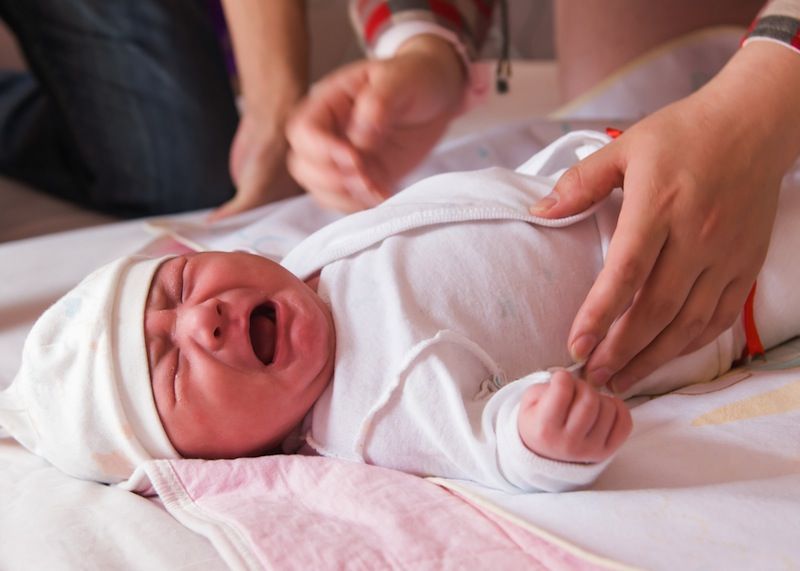Cry Analyzer Could Indicate Babies' Health

From soft, coo-like whimpers to heartbreaking sobs, a baby's cries can evoke strong emotions, and yet the reasons for crying can remain mysterious. But now, a new tool for analyzing the sound of a baby's cry could provide clues to crying patterns that might signal health problems.
The cry analyzer, developed by researchers at Brown University, can perceive slight variations in cries that a human ear can't detect. These variations could be used to identify neurological problems or developmental disorders, the researchers say.
"The cry might tell you something you might not otherwise pick up," said psychiatrist Barry Lester of Brown University, part of the team that developed the cry analyzer. [11 Facts Every Parent Should Know About Their Baby's Brain]
For example, the system could identify problems in infants who are premature, growing more slowly than normal, or who have been exposed to drugs, Lester said.
The cry analyzer consists of a standard digital voice recorder for capturing crying sounds, and a computer program that analyzes the sounds and extracts a suite of information about their acoustic features. The system breaks down the cries into 10-millisecond blocks, and measures the pitch, or fundamental frequency — the rate at which the vocal cords vibrate. The average fundamental frequency for a typical baby is about 300 to 400 Hertz, Lester said.
Two cries can have the same fundamental frequency, but still sound different because of differences in the shape and tension of the vocal tract. The brain modifies vocal tract tension via the cranial nerves. "Since the cry is controlled by cranial nerves, now we have a connection between the cry and the brain," Lester told LiveScience.
The cry analyzer measures subtle properties of the babies' cries that suggest problems with their brain and nervous system. In addition to frequency, the system can measure other characteristics of a cry, such as loudness, timing and distortion.
Sign up for the Live Science daily newsletter now
Get the world’s most fascinating discoveries delivered straight to your inbox.
Some babies rarely cry because their nervous systems are not reactive enough, Lester said. Others cry very easily. "You hardly touch them, and they're already crying hard," he said.
During the 1950s and '60s, researchers in Scandinavia noticed that babies with certain abnormalities produced abnormal cries. The best example is cri-du-chat syndrome, French for "cry of the cat," a genetic condition in which infants make high-pitched cat-like sounds. This gave scientists the idea that a baby's cry could indicate mental disorders.
Lester shies away from saying the cry analyzer can "detect" specific mental problems. "It's not like a blood test," he said. Rather, it can pick up on early warning signs that a baby may have problems.
He also noted that a baby's brain is very plastic: its development is heavily shaped by the home environment during the first few years of life. Crying functions as a social signal that affects how parents respond, Lester said.
The cry analyzer, detailed in June in the Journal of Speech, Language, and Hearing Research, is completed but has not yet been released to the public. After putting the finishing touches on the system, Lester and colleagues plan to make it freely available online.
"The more available it is, the more people will use it," Lester said. "Let's hope that it leads to information that benefits the health and development of babies."
Follow Tanya Lewis on Twitter and Google+. Follow us @livescience, Facebook & Google+. Original article on LiveScience.com.


'Love hormone' oxytocin can pause pregnancy, animal study finds

'Mini placentas' in a dish reveal key gene for pregnancy









